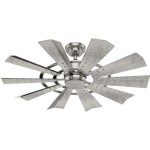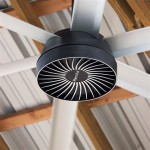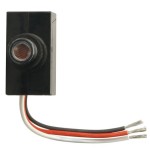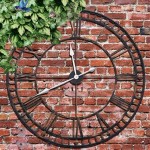Low Voltage Step Lighting Outdoor
Outdoor step lighting plays a crucial role in enhancing safety and aesthetics in residential and commercial landscapes. Low voltage options, in particular, offer a combination of practicality, energy efficiency, and ease of installation, making them a popular choice for illuminating pathways, stairways, and decks. This article explores the benefits, installation process, and various design considerations for low voltage step lighting in outdoor settings.
Enhanced Safety and Security
One of the primary benefits of low voltage step lighting is improved safety. By illuminating walkways and stairs, these lights help prevent trips and falls, especially during nighttime hours. This is particularly crucial for properties with uneven terrain or multiple levels. Increased visibility also deters potential intruders, adding an extra layer of security to the property. The subtle illumination provided by low voltage lights allows individuals to navigate outdoor spaces confidently while avoiding harsh, overly bright light that can cause glare and discomfort.
Energy Efficiency and Cost Savings
Compared to traditional line voltage lighting systems, low voltage options consume significantly less energy. This translates to lower electricity bills and a reduced environmental footprint. Low voltage systems typically operate on 12 volts, as opposed to the standard 120 volts of household wiring. This lower voltage requires a transformer to step down the electricity, but the overall energy consumption remains significantly lower, leading to long-term cost savings. LED bulbs, commonly used in low voltage fixtures, further enhance energy efficiency due to their long lifespan and low power consumption.
Easy Installation and Versatility
Low voltage step lighting systems are relatively straightforward to install, often requiring minimal wiring and specialized tools. This simplifies the process for DIY enthusiasts and reduces installation costs for professional installations. The flexibility of low voltage wiring allows for greater placement options, enabling homeowners and landscapers to create customized lighting designs. The smaller cables can be easily concealed under decks, along railings, or within landscaping features, offering a clean and unobtrusive look.
Choosing the Right Fixtures
Selecting appropriate fixtures is crucial for maximizing the effectiveness of low voltage step lighting. Various styles are available, including recessed lights, surface-mounted lights, and post lights, each offering unique aesthetic and functional characteristics. Recessed lights offer a sleek, integrated look, seamlessly blending into the steps or walkway. Surface-mounted lights provide a more prominent and decorative element, while post lights are ideal for illuminating larger areas or highlighting specific landscape features. Material selection is also important, with options ranging from weather-resistant plastic to durable metal housings.
Planning and Placement
Careful planning and strategic placement are essential for creating a well-designed low voltage step lighting system. Consider the layout of the landscape, the pathways and stairs that require illumination, and the desired aesthetic effect. Evenly spaced lights ensure consistent visibility, while highlighting specific features, such as trees or architectural elements, can add visual interest. The distance between fixtures should be determined based on the brightness of the lights and the overall desired level of illumination. Testing the lighting arrangement during nighttime hours ensures optimal coverage and helps avoid dark spots or overly bright areas.
Integrating with Landscape Design
Low voltage step lighting can be seamlessly integrated into the overall landscape design, enhancing both functionality and aesthetics. Consider the existing landscaping elements, such as plants, trees, and water features, when planning the lighting layout. Highlighting specific plants or trees with strategically placed lights can create dramatic focal points, while illuminating water features adds a touch of elegance and tranquility. The color temperature of the lights can also play a significant role in the overall ambiance, with warmer tones creating a more inviting atmosphere and cooler tones offering a more modern feel.
Maintenance and Troubleshooting
Maintaining low voltage step lighting systems is generally straightforward. Regularly inspect the fixtures for any damage or debris buildup, and clean them as needed. Check the wiring connections for looseness or corrosion, and replace any damaged bulbs promptly. Troubleshooting common issues, such as flickering lights or power outages, typically involves checking the transformer, wiring, and bulbs. If the issue persists, consulting a qualified electrician is recommended to ensure safe and effective repairs.

Led Outdoor Landscape Lighting Black Half Brick Step Light 7110 Series Natural White 4000k Low Voltage 12volt

How To Install Outdoor Low Voltage Led Step Lights Mullan Lighting

4 Pack Of Stla04 Low Voltage Step Lights Outdoor Deck Kings Lighting

Leonlite Low Voltage Led Step Lights Outdoor 12v 3 5w Landscape Stair Anti Glare Surface Mount Deck Light Ul Listed Ip65 Waterproof Aluminum Oil Rubbed Broe 3000k Warm White Pack Of 6

How To Install Outdoor Low Voltage Led Step Lights

Hampton Bay 15 Watt Equivalent Low Voltage Black Motion Sensing Integrated Led Outdoor Stair Light With Frosted Acrylic Lens Pnb000003 03 The Home

What You Need To Know Before Installing Low Voltage Led Step Lights

Vonn Lighting 1 Watt 3 25 In Low Voltage Black Outdoor Etl Certified Integrated Led Step Landscape Path Light Vos54478bl The Home

12 Pack Of Dla01 Low Voltage Deck Lights Outdoor Step Kings Lighting

Low Voltage Step Lights 7 Inch 3w Deck Lighting








